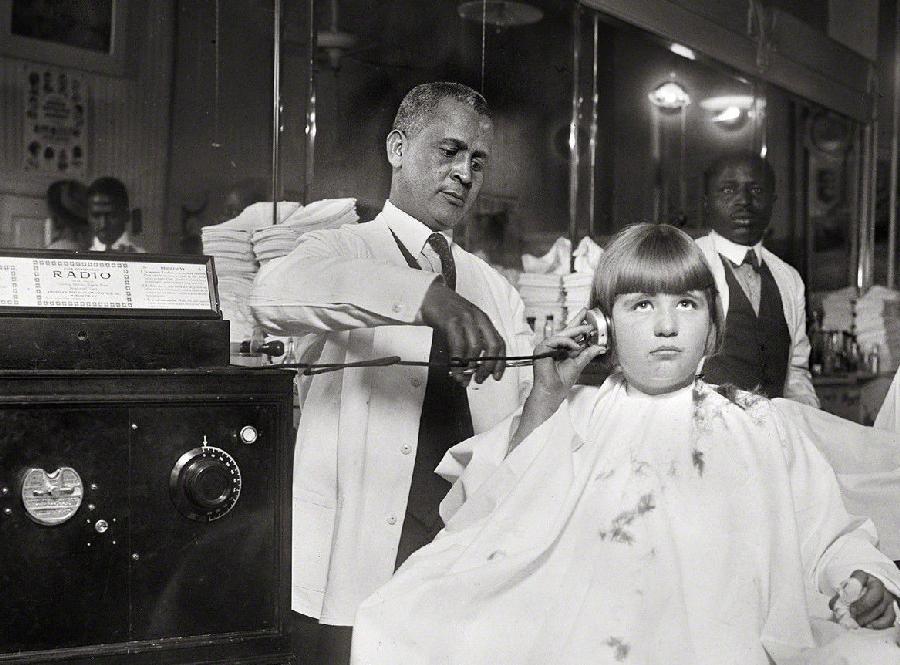
American Radio Trends: Formative Years: Rapid Growth

Figure 1.--Here we see a coin-operated radio in a Washington, D.C. barbershop at the very beginning of commercial radio (1922). One of the erly problems ti be resolved was effective speakers, but in this case not having good speakers fit in nicely with the pay, coin operated approach.
|
|
Commercial radio was a post-World War I development. Wireless appeared in the early-20th century. It was a first sending morse code. It was how the RMS Titanic alerted other ships of the unfolding disaster (1912). Major advances were made during World War I (1914-18). Thus fter the War, the basic technology for commercial radio was in place. The first American commercial radio broadcast took place on November 6, 1920, in Pittsburg, Pennsylvania. The station was KDKA. A Westinghouse employee climbed into a wooden shack on the roof of a company plant and spoke into a converted telephine mouth piece. The first words were, "We shall now broadcast the election returns." He went on to provide details on the election of Warren Harding as president. It did not take long for radio to become a major industry. By 1925 about 10 percent of Americans had radios
Radio came first to urban America. The early consumer sets were very expensive. The first stations had weak signals. Gradually at technology improved, spun forward by market forces stations with stronger signals were built. Despite the Depression, most American families had radios. An impressive 63 percent of Americans had acquired a radio (1933). The radio was given a place of honor in the living room. Even during the Depression, Americans had radios as the prices fell sharply due to mass production and the resulting market forces. This was not the case in Europe. Radio had continued througout the 1920s to be primarily an urban phenomenon. A major limitation in rural areas was that few farms had electricity. Electrical companies were unwilling to run lines into sparsely populated rural areas. The expense was enormous and the reurns much more limited than in the cities. This changed in the 1930s with the New Deal. The Rural Electrification Administration (REA) brought electrity to American farms. A reader writes, "The radio here is an electric appliance. We can see a set of plugs at rear. While farms were not connected to electrical lines, some farms had limited electricity generated by windmills which were once very common on farms in America and Canada. Before the rsadio here there was crystal radio. And batteries came only in the beginning of 50s." The radio was at the time a major piece of furniture. There were no transistors in 1941 and the vacume tubes used in radios made sets much larger than modern radios. Most American families would gather around the radio after dinner. Listening to news broadcasts and special programs on the radio was a familiar after dinner activity.
HBC

Navigate the Boys' Historical Clothing Web Site:
[See also the Main American radio page]
[Introduction]
[Activities]
[Biographies]
[Chronology]
[Clothing styles]
[Countries]
[Bibliographies]
[Contributions]
[FAQs]
[Glossaries]
[Images]
[Links]
[Registration]
[Tools]
[Tools]
[Boys' Clothing Home]
Created: November 5, 2003
Last updated: November 5, 2003



